This is a simplified down and dirty explanation of how to get these tubes running -no frills, cheap and cheerful, lets get it done approach. Engineers please avert your gaze "cringe warning" rank amateur content ahead.
The Russian Federation is sitting on a pile of not so old vacuum fluorescent display tubes (they made them into the 90's). This awesome tech fell out of favor in the West when LED s arrived in the seventies. However if you act now you can still scoop up a fist full of this nifty stuff for a song. If you buy them in bulk the are often cheaper than seven segment LED displays. I bought IV-3 s for about 50 cents a piece and how could you go wrong with that ? The question is what do you do once you have them ? Well... I couldn't find a simple explanation of how to use them, so they sat in their box. Looked cool as Hell though, all that retro appeal, don't you know.
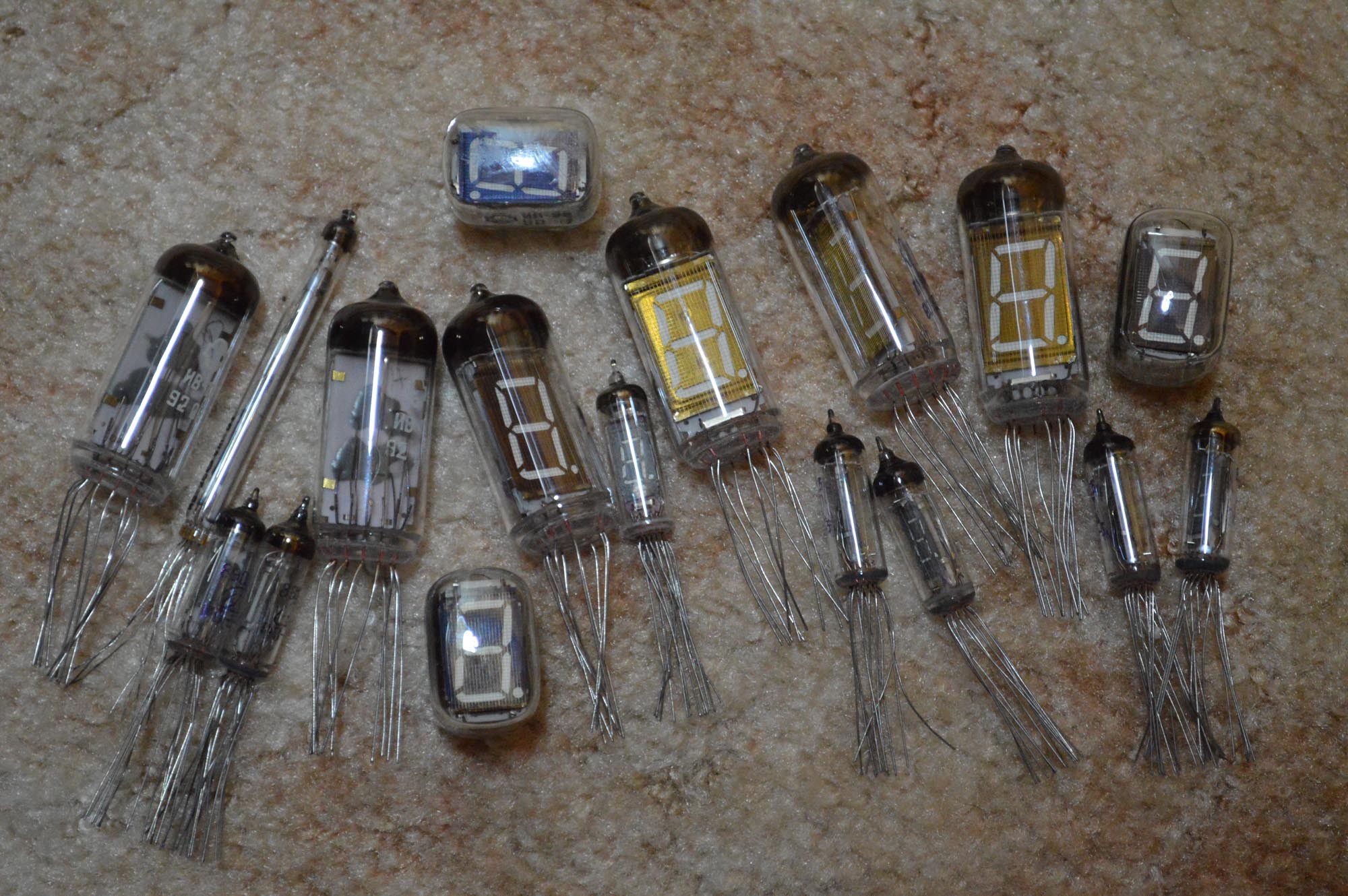
Lots of Russian VFD tubes --too many some say--
Anyway it turns out you can use them pretty much like a common cathode LED display. The idea is similar and if you have built anything with LED displays you'll quickly understand why. Let me state here that this is an article for the beginner and is not intended to describe all of the possible ways these tubes can be driven nor is it meant to enlighten the leaned. If you want esoterics try the EEVblog, that's where the cool kids hang out, but I don't hang with that gang their pool is too deep.
I will describe how these tubes work and how to test them. I will describe how to drive these tubes in a multiplexed display and in the following article I will show you how to build a frequency counter, replacing the common cathode LED s with IV-11 tubes.
For our purposes the tube consists of three components.
1 Heater or "cathode" or "filament"
2 Grid
3 Segments or "anodes"
The heater is necessary to excite the electrons and make them jump to the "anodes" which lights the segments. The grid functions as an "on off" switch for the tube when we are operating it in a multiplexed display.
Using a multi meter find the two leads with very low resistance (just a few ohms). These are the heater leads. They are not polarized. The heaters run with 1v to 1.5v for most of these Russian tubes (check your datasheet). The current draw will be 30ma to 100ma depending on the size of the tube. No current limiting resistors are needed on these tube, and they are quite tolerant to a little accidental over voltage. If you see an orange or pink glow at the base of the tube the heater voltage is defiantly too high. For your test you can power the heater with a AA battery.
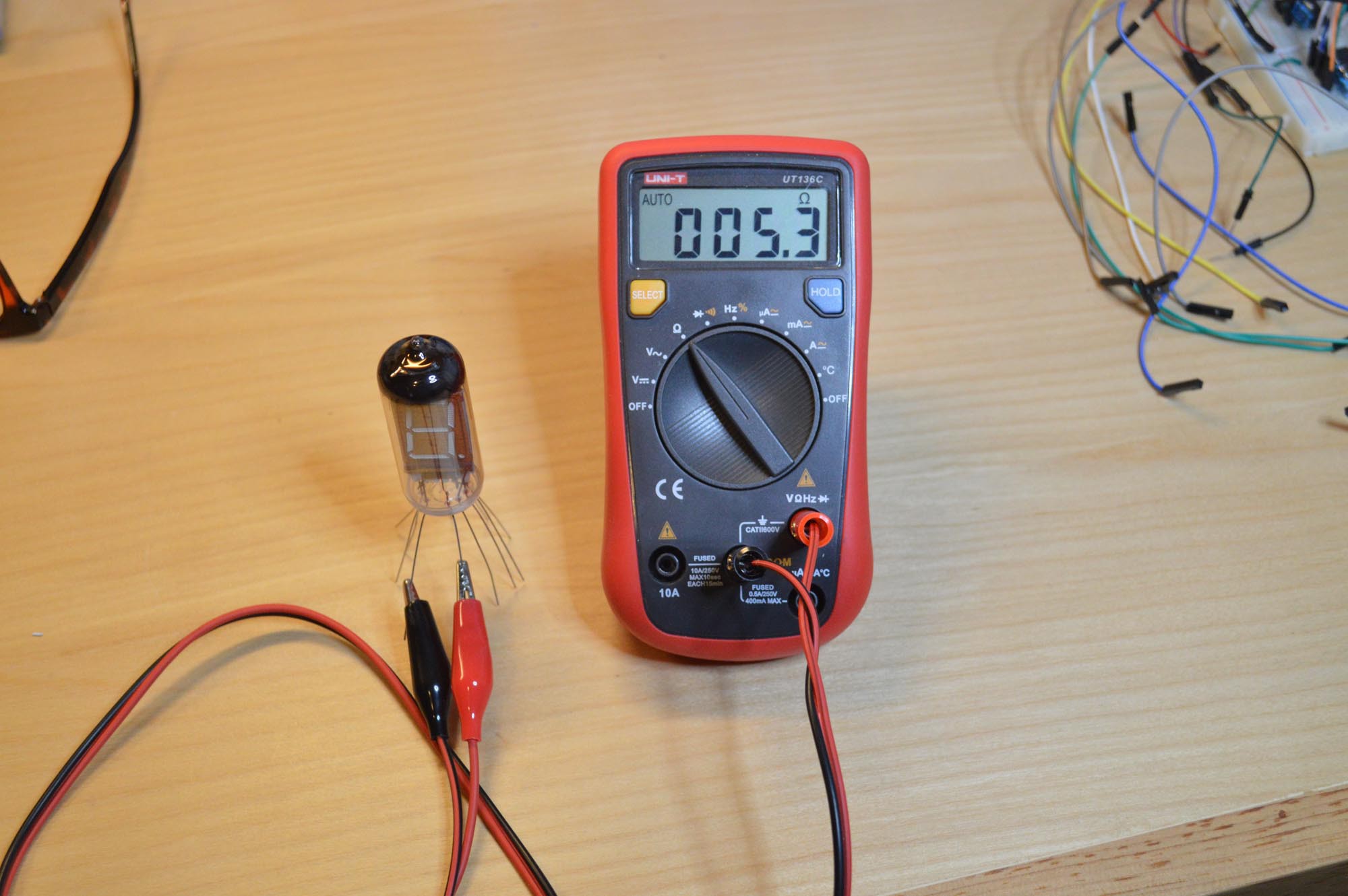
Measuring the resistance of the heater IV-11
To turn on the segments we need to supply power to the grid and the individual segments we wish to illuminate. A 9v battery is sufficient to make the segments glow. Again no current limiting resistors are needed on a VFD. Attach the 9v negative to the same pin of the heater you have attached the negative of the AA battery. Connecting the remaining leads together with the positive of the 9v will illuminate all of the segments. The grid is the lead that when disconnected turns off all of the segments. the other leads will be the anodes that illuminate the individual segments.
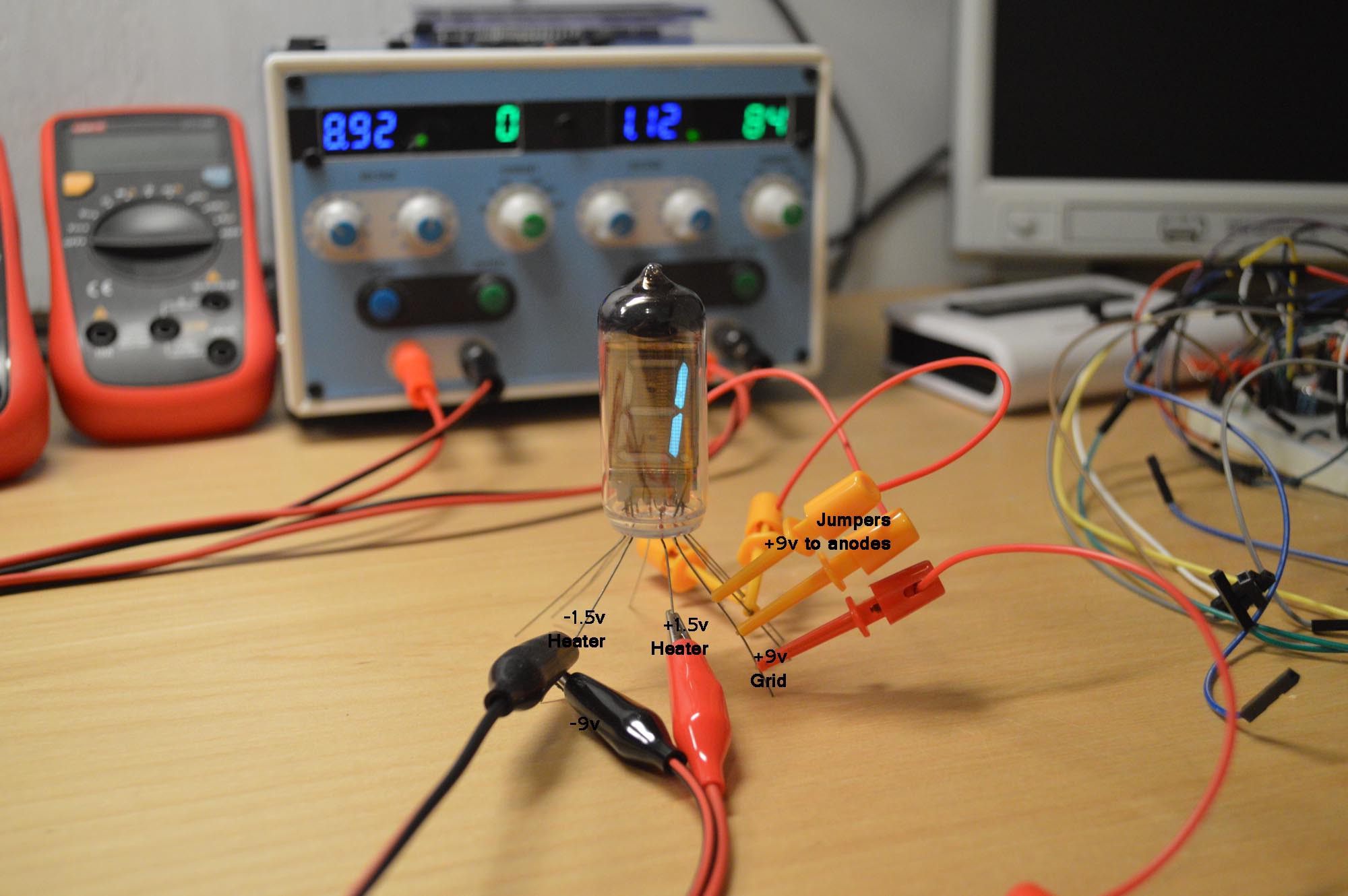
IV-11 under test
1.5v on the heater leads simulates AA battery on heater leads. Heater is drawing 84ma. 9v negative attached to the 1.5v negative on the heater....
Read more » w_k_fay
w_k_fay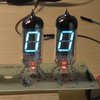
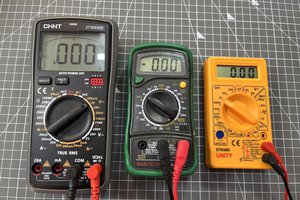
 Lithium ION
Lithium ION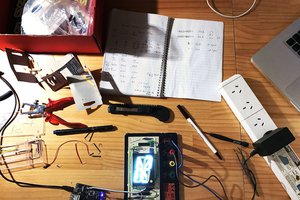
 Ben Patterson
Ben Patterson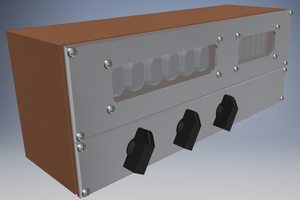
 Charles Ahrens
Charles Ahrens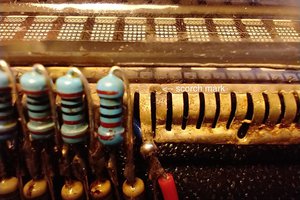
Exactly - assuming that pulling an anode high lights it up, what I proposed is less efficient, due to the inversion. However, in a non battery powered application, that may not be much of a concern. Furthermore, since the anodes for my display require little current, very little current needs to be applied to the transistor bases to turn them on. I am using VFD's removed from old equipment such as stereos and VCR's (they do not require AC). So I like the single transistor approach only due to its simplicity when using transistors, however in this case, I agree that high side switching is generally a better overall solution. That along with using driver chips is a cleaner solution than soldering up a bunch of discrete transistors.